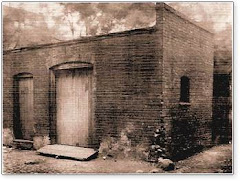March 26, 2008 - Rice prices jumped 30 per cent to an all-time high (doubled since January); global rice stocks are at their lowest since 1976 (foreign sales restrictions have removed about a third of the rice traded in the international market):
1) Egypt, leading exporter, imposed a formal ban on selling rice abroad to keep local prices down,
2) Philippines (world’s largest buyer of the grain) announced plans for a major purchase of the grain in the international market to boost supplies,
3) Indian government imposed further restrictions on the exports of rice to combat rising local inflation),
4) Indonesia stopped its farmers from selling rice abroad ( joined Vietnam, Egypt, China, Cambodia, India in banning foreign sales),
5) Australian rice production collapsed due to draught - down 98% since 2003

(source: Australia wine and rice producers; New South Wales Rice Marketing Board; Australian Wine and Brandy Board)
6) April 15, 2008 - Rice futures in Chicago rose to all-time high of $22.17 per 100 pounds, up 63 per cent since January
TFC Commodity Charts
Rice (RR, CBOT)
Monthly Price Chart
(source: http://futures.tradingcharts.com/charts/RIM.GIF)














